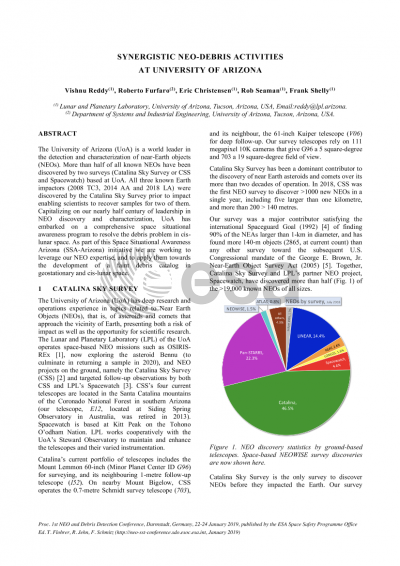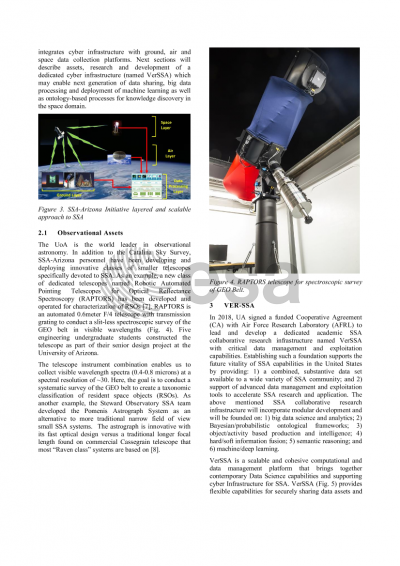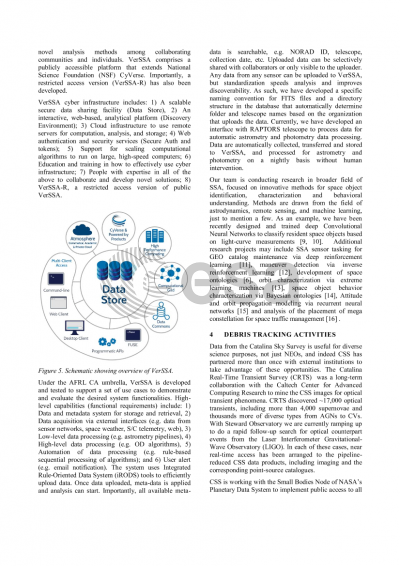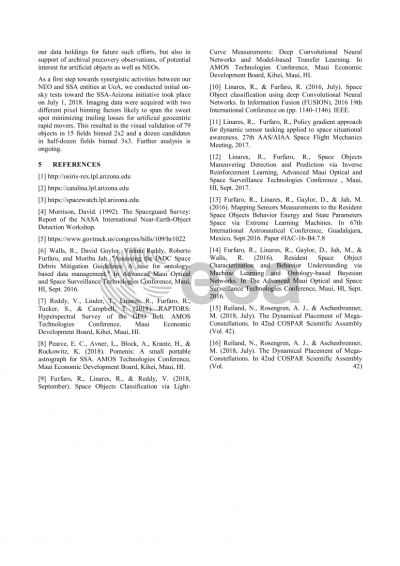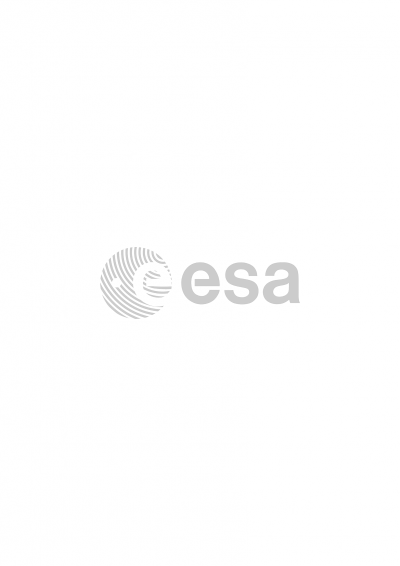Document details

Abstract
The University of Arizona (UoA) is a world leader in the detection and characterization of near-Earth objects (NEOs). More than half of all known NEOs have been discovered by two surveys (Catalina Sky Survey or CSS and Spacewatch) based at UoA. All three known Earth impactors (2008 TC3, 2014 AA and 2018 LA) were discovered by the Catalina Sky Survey prior to impact enabling scientists to recover samples for two of them. In addition, UoA is also the PI institution for the NASA OSIRIS-REx sample return mission to potentially hazardous asteroid Bennu. Capitalizing on our nearly half century of leadership in NEO discovery and characterization, UoA has embarked on a comprehensive space situational awareness program to resolve the debris problem in cis-lunar space. As part of this Space Situational Awareness Arizona (SSA-Arizona) initiative we are working to leverage our expertise in detection and characterization of NEOs using CSS and the NASA Infrared Telescope Facility (IRTF), and to apply them towards the development of a faint debris catalog in geostationary and cis-lunar space. Using the newly developed VerSSA, i.e. a cyber infrastructure for SSA funded by a cooperative agreement with Air Force Research Laboratory, we are developing an end-to-end pipeline to extract debris targets that are serendipitously observed by CSS assets. Our goal is to demonstrate that astrometric observations of debris targets in NEO survey data such as CSS can be used to sustainably maintain a faint debris catalog. Building upon NEO spectral surveys, we have commissioned the RAPTORS survey to collect visible wavelength spectral data of all objects in geostationary orbit. The results from the RAPTORS survey will provide us with baseline information to create the first comprehensive spectral atlas of both active satellites and debris in geo and cis-lunar space.
Preview
